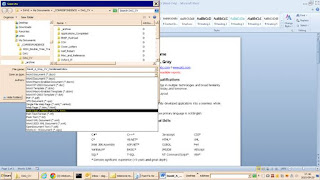Dear Bill:
On the Monday, 03 May 2016, I sent a message to you captioned “My Resume Is Half of the Story...” about which I have received some very negative feedback from people whose opinion I value and trust. My intent was to communicate a significant matter that is not covered in the resume, which is that I have none of the distractions that interfere with the effectiveness of many employees, and that my priorities align with those of prospective employers. Yesterday, my wife, Janet, said it this way in a message to one of our friends.
The things that are important to him are: The computer and doing the job spectacularly, his wife, and Classical Music; in that order. He is willing and often does work any day any time, and at a moment’s notice for the client. That is his life.
I eagerly anticipate the day when my quest for an employer who appreciates and needs my unique combination of talents comes to a spectacularly successful fulfillment.
Respectfully yours,
David A. Gray
Email: dagray@p6lists.com
WWW: www.wizardwrx.com
Cell: +1 (817) 298-0867
4014 Double Tree Trail
Irving, TX 75061-3936


















